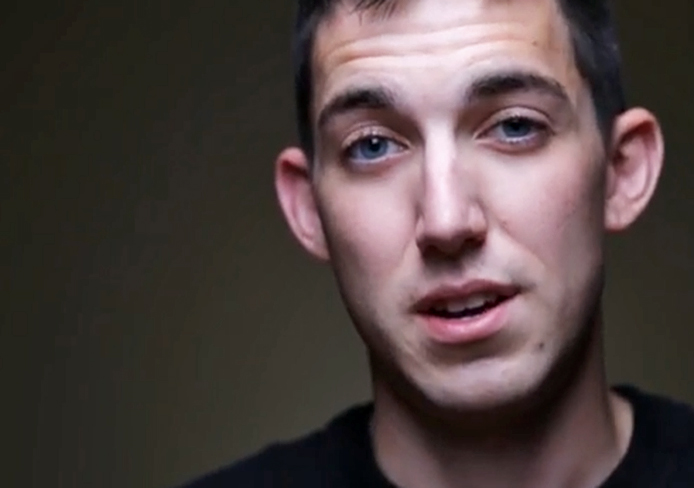
Matthew Cordle posted a video on YouTube Sept. 3 confessing to killing a man in a drunk driving hit-and-run in June.
Credit: Courtesy of YouTube
When a 22-year-old man confessed to killing a man in a drunk driving hit-and-run via YouTube video last week, Ohio State students took notice.
Matthew Cordle posted a video Sept. 3 confessing to the accident. Since then, the about 3.5-minute video has received more than two million views and garnered attention for Cordle’s Sept. 18 arraignment.
His viral admission details the events of June 22 when he struck 61-year-old Vincent Canzani by driving the wrong way on a Columbus interstate after a night of heavy drinking with friends, according to the video. The video was meant to act as his legal confession to the crime and a guilty plea.
Cordle pleaded not guilty in his preliminary hearing Wednesday, though. Cordle’s defense attorneys, Martin Midian and George Breitmayer III, who did not return calls requesting comment Thursday, issued statements that said although their client has plead not guilty, it will not act as a deterrent for his intention, which he stated in his video, to “take full responsibility for what (he’s) done.”
“The reason we entered the not guilty plea is so there is no allegations that we chose a particular judge for a particular reason,” Breitmayer told the Associated Press. “This way it’s completely random.”
Second-year in political science Alys Brown called Cordle’s honesty in his YouTube video “courageous.”
“Most people are too concerned about themselves and getting ahead, but he instead took a different route and is honoring the man he killed (by pleading guilty),” she said.
Taylor Schriver, though, said he is not fully convinced Cordle’s admission was entirely selfless.
“If he was going to plead guilty, why not just announce it to everyone — it makes himself look better,” the first-year in biomedical engineering said. “It’s tough because (his video confession) definitely does have a good value to it, but whether his intent was good or not is hard to say.”
The issue of drunk driving is one that students, like Schriver, believe is prevalent on OSU’s campus.
“It’s something that everyone pretends they don’t do or likes to say is bad, but everyone knows someone who does or has driven drunk,” Schriver said. “It’s definitely an issue.”
Students charged with driving under the influence could be suspended, according to the OSU website “Ohio Laws: Party Smart.” The website also states the maximum penalty for driving under the influence is a $1,000 fine or six months imprisonment or both, as well as forfeiting one’s driver’s license for six months.
Although Brown said she thinks the issue exists at OSU, she was unsure what type of action could be taken.
“I think OSU should be aware of the problem (but) I don’t know what exactly they can do,” she said.
In one year in Ohio, approximately 20,000 people will be involved in an alcohol-related crash, 15,000 people will be injured and 400 people will die due to an alcohol-related auto accident, according to DMV.org.
Cordle said he hoped to extend his message to potential drunk drivers and young people across America, but some students are unsure it will leave a long-term impact.
“Like a lot of things, it has a very short impact but in the end, I really don’t think it’s going to have more of an effect than anything else ever has,” Schriver said.
Brown said although the video was “eye-opening” it will probably not have much of a widespread effect.
“(Events) like that only (change) people’s point of view if it happens to them or someone really close to them, and I mean, being from Columbus, it is kind of close to us but maybe from another part of the country it might not be as impactful,” she said.
Cordle’s next court date is set for Sept. 18.
An earlier version of this story referred to Taylor Schriver as “she.” In fact, Taylor Schriver is male.


